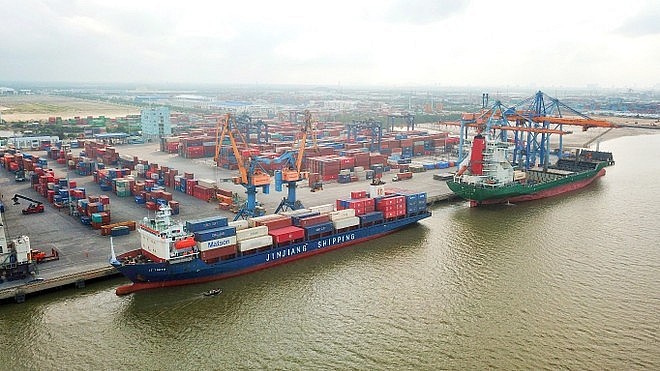The Ministry of Construction has recently approved a plan outlining significant investment requirements for Vietnam’s maritime infrastructure. The estimated funding needed totals approximately 2.87 trillion VND for public maritime infrastructure and 7.96 trillion VND for cargo terminal development.
This ambitious plan, with a horizon of 2030, also entails the acquisition of roughly 217 hectares of land and 28,650 hectares of water surface.
By 2030, the strategy aims to bolster the local seaport system’s capacity, targeting the handling of 47.2–48.2 million tons of cargo and serving 1.13–1.26 million passengers.

|
| With the implementation of the Quang Ngai seaport development plan, the port terminals will experience substantial growth in cargo volume and passenger traffic. The strategy allocates space for 11 terminals with 41 berths, offering a total length of 8,251 meters. (Photo: PV/VietnamPlus) |
Quang Ngai is poised to become a bustling maritime hub, with new terminals addressing the rising demand for cargo clearance, anticipated to increase by 4.5–5.5% annually until 2050.
The blueprint also ensures the maintenance and development of public maritime infrastructure, capable of accommodating vessels of up to 200,000 tons, in line with the current fairway capacity.
A key emphasis of the plan is on seamless connectivity, integrating various transport modes, including roadways, railways, inland waterways, and coastal routes, into a cohesive national infrastructure network.
Additionally, specialized facilities, such as the Dung Quat shipyard terminal, a yacht marina, and dedicated spaces for state agencies, research, training, and maritime services, are also incorporated into the comprehensive development strategy.



